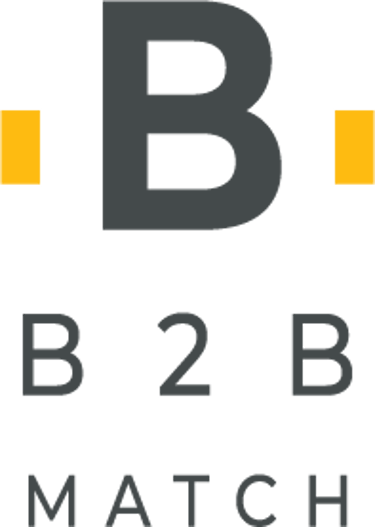Guide: How to Turn a LinkedIn Connection into a Paying Client
LinkedIn is a powerful platform for B2B sales. But getting someone to accept your connection request is only the beginning. The real challenge – and opportunity – lies in turning that connection into a qualified sales conversation and eventually into a paying customer. This guide outlines the exact steps to do that, emphasizing genuine connection, value delivery, and strategic persistence.
7/22/20259 min read


📋 Table of Contents
Qualify the Connection (First 48 Hours)
Cultivate Your Personal Brand
Craft the First Message (Non-Sales)
Build the Conversation (Messages 2–4)
Identify Pain & Intent (Messages 5–8)
Initiate the Sales Call
Run an Effective Sales Call
Follow Up & Close
Handling Objections & Stalled Conversations
What NOT to Do
Key Metrics to Track
Real-Life Example
1. Qualify the Connection (within 24–48 hours)
Before you even send your first message, understand who you've connected with. This helps tailor your approach.
Check the following:
Job Title & Department: Are they a decision-maker, influencer, or someone who could refer you to the right person?
Company Size: Does it match your Ideal Customer Profile (ICP)?
Activity Level: Are they active (posting/commenting)? This indicates engagement and potential receptiveness.
Mutual Connections: Can you leverage credibility through shared contacts?
Recent Posts/Activity: Look for any challenges they've shared, hiring initiatives, product launches, or topics they're engaging with. This offers invaluable personalization opportunities.
Company Website & Google Search: What’s their positioning? What common pain points do companies in their industry face?
Optional: Use LinkedIn Sales Navigator to analyze deeper signals (team growth, job changes, new funding, etc.).
2. Cultivate Your Personal Brand
Your LinkedIn profile and activity are your digital handshake. Prospects will check you out.
Optimized Profile: Ensure your headline, summary, and experience clearly articulate the value you provide and to whom. Use a professional photo.
Thought Leadership: Regularly share valuable insights, comment on relevant posts, and perhaps publish articles related to your expertise. This positions you as a knowledgeable resource, not just a salesperson.
Engagement: Like, comment on, and share content from others in your industry or target audience. This increases your visibility and demonstrates genuine interest.
3. The First Message (Do NOT sell yet)
Objective: Start a human conversation, not a pitch. Focus on common ground and genuine curiosity.
❌ Bad example: "Thanks for connecting! I help companies like yours with lead generation. Can we set up a quick call?" (Too pushy, generic, and immediate sales focus).
✅ Strong example: "Hi [Name], Thanks for connecting! I saw you're leading [function/team] at [Company]. I came across your [recent initiative/post/project] – very interesting! Curious: what are you most focused on this quarter?"
Structure:
Genuine thanks for connecting.
Highly personalized reference to their profile, recent activity, content, or company news.
A curious, open-ended question to spark conversation.
No Call to Action (CTA) for a meeting yet. The goal is to get a reply and begin a dialogue.
4. Build the Conversation (Messages 2–4)
Goals: Spark engagement, discover their potential pains/challenges, and build credibility (without overtly pitching). Continue to personalize every message.
Conversation techniques:
Ask open questions: "What’s the biggest challenge you're seeing in [X area relevant to their role/industry] right now?" "How has [recent industry trend] impacted your team's goals?"
Share insights (without selling): "Many [industry] companies we speak with are struggling with [specific challenge you solve]. Is that something you're seeing too?" "I've noticed a shift towards [new approach] in [their industry]. What are your thoughts on that?"
Offer value (non-salesy): "I just read a case study on how [company] solved a similar problem using [solution concept]. Want me to send it your way? No pressure at all." "I published an article on [topic relevant to their challenge]. Would that be helpful?"
5. Identify Buying Intent (Messages 5–8)
Look for signals that indicate they might be open to a solution.
🔥 Signs they’re warm:
Asking about your solution or how you help others.
Sharing frustration with their current tools, processes, or lack of progress.
Responding quickly or with lengthy, detailed replies.
Mentioning internal initiatives or challenges that your solution directly addresses.
Asking follow-up questions about the value you've offered.
🧊 Signs they’re cold:
Very short, one-word replies.
Avoiding specifics or deflecting your questions.
No questions asked in return.
Saying “we’re good for now” or "not a priority."
6. Initiate the Sales Call
Once there’s a clear pain point or expressed curiosity, it's time to invite them to a low-commitment discovery call. Frame it as an exploration of fit, not a hard sell.
Strong message:
"Sounds like [challenge they mentioned] is a real focus area for you right now. I’ve worked with similar teams facing the same thing and have a few ideas that might help, or at least offer a different perspective. Open to a quick 15-minute Zoom this week to explore whether there’s a potential fit, or even just to share some insights?"
Keep it relaxed, low pressure, focused on mutual fit – not selling. Emphasize value, not just a meeting.
7. Run a Winning Discovery Call (15–30 min)
This is where you transition from conversation to a structured discovery of needs.
Preparation:
Research their company, product, market, and recent news.
Prepare targeted questions based on your LinkedIn conversation.
Have relevant case studies or success stories ready (but don't force them).
Define your unique value proposition specifically for their likely challenges.
Structure:
Intro (2 min): Set context, build rapport, and reiterate the low-pressure nature of the call.
Understand (10–15 min): Deep dive into their needs, challenges, goals, and current processes. This is 80% listening.
Present (5–8 min): Briefly present only the part of your solution that’s directly relevant to the problems they just articulated. Focus on outcomes and benefits, not features.
Next Steps (2–3 min): Clearly define the logical next action (e.g., proposal, demo, follow-up call with other stakeholders).
Killer Questions (Examples):
“How are you currently handling [the problem we discussed on LinkedIn]?”
“What’s working/not working with that approach?”
“If nothing changes in 6 months, what does that mean for your team/company?”
“What would success look like for you in solving this challenge?”
"What impact does [problem] have on your [key metric/goal]?"
8. Follow Up & Close
The follow-up is crucial for maintaining momentum.
After the call:
Send a recap email within 24 hours. This shows professionalism and confirms understanding.
Include a short summary of their key pains and how your solution can specifically help.
Attach relevant material (a concise case study, a one-page PDF outlining your process, not a generic brochure).
Propose clear next steps with a timeline.
Follow-up message template (after discovery call):
"Hi [Name], Great speaking with you today. I appreciate you sharing insights into [their key challenge/goal].
Based on our conversation, I believe we can help you:
Reduce [pain 1 discussed on call]
Improve [metric 2 they mentioned]
Achieve [goal 3 specific to their situation]
To explore this further and ensure it's a good fit, let’s lock in the next step: a [proposal walkthrough / demo / call with [stakeholder] / trial setup]. Does Thursday or Friday work best for a quick 30-minute slot?"
9. Handling Objections & Stalled Conversations
Not every conversation will lead to a sale immediately. Be prepared to address common objections and re-engage dormant leads.
Common Early Objections & Responses:
"We're good for now / not looking."
"Perfectly understand. Many teams feel that way until they realize the potential impact of [your unique value proposition/a specific insight]. If anything changes, or if you're ever exploring ways to [specific benefit], feel free to reach out."
"Understood. Just out of curiosity, what current solutions or strategies are you finding effective for [area you help with]?" (Keep the door open for learning).
"No budget currently."
"I appreciate your transparency. Often, the investment only makes sense if the ROI is clear. If we could potentially help you [quantifiable benefit, e.g., save X hours, generate Y leads], would that be something worth exploring for future planning?"
"That's a common challenge. Sometimes, there are grant programs or internal initiatives that can unlock resources if the value is compelling enough. Could I share a quick case study that outlines the ROI for similar companies?"
Re-engaging Stalled Conversations:
The "Value-Add" Nudge: After a week or two of no response, send a quick message with a new piece of relevant content (article, industry stat, news) and a soft "thought of you" line.
"Hi [Name], I just read this article on [relevant topic] and thought of our earlier conversation about [their challenge]. [Link to article]. No need to reply, just thought it might be helpful!"
The "Breakup" Message (use sparingly): If a lead truly goes cold, a polite "breakup" message can sometimes elicit a response or provide closure.
"Hi [Name], I haven't heard back from you regarding [our last conversation/the proposed next step], which is perfectly fine. I understand things get busy. If now isn't the right time for [your solution], please let me know. Otherwise, I'll assume this isn't a priority and will close our file for now. Wishing you all the best with [their project/goals]."
10. What NOT to Do
❌ Don’t pitch in your first message. It's the fastest way to get ignored.
❌ Don’t use generic templates. Personalization is key at every stage.
❌ Don’t chase with desperation. Maintain professionalism and respect their time.
❌ Don’t talk about features before discovering needs. Always lead with their problems, not your product.
❌ Don’t spam or use overly aggressive automation. LinkedIn values genuine connections.
11. Key Metrics to Track
Measuring your efforts helps you refine your strategy.
12. Real-Life Scenario Example: How "Sarah" Closed a $25K Deal from a Cold LinkedIn Connection
Step 1: The Connection & Initial Research
Sarah, a B2B marketing consultant specializing in SaaS, connects with Mike, a VP of Marketing at a 50-employee SaaS startup. Sarah's research shows the startup is growing but recently posted about "scaling challenges." Her profile clearly states she helps SaaS companies with scalable lead generation.
Step 2: First Message (Personalized & Curious)
Sarah sends: “Hi Mike, thanks for connecting! Saw you're leading growth at [Startup X] – love what you're doing in the [industry] space. I noticed your recent post about the challenges of scaling efficiently. Curious — what’s top of mind for you when it comes to pipeline generation this quarter given those scaling efforts?”
Mike replies: “Trying to figure out how to scale lead gen without just adding more SDRs… it's a bottleneck for us.”
Step 3: Continue the Conversation (Value-Driven, Not Salesy)
Sarah sends: “You're definitely not alone — I hear this a lot, especially with growing SaaS companies. Just helped [similar SaaS company] generate 30% more SQLs using a combination of inbound optimization and strategic partner channels, without growing their headcount. It really helped them break through that bottleneck. Would it be useful if I sent over a brief outline of how they approached it? No pressure at all, just a quick read if it's relevant.”
Mike replies yes. Sarah sends a concise, anonymous case study summary.
Step 4: Discovery Call Invitation & Execution
After Mike thanks her for the case study, Sarah follows up: “Glad that was helpful, Mike! Sounds like breaking through that pipeline bottleneck is a real focus area for you. I have a few ideas that might help you achieve that efficiency, based on what we've seen work for similar startups. Open to a quick 20-minute Zoom this week to explore if any of these resonate and if there's a potential fit for how we could help?”
Sarah books a call. During the call, she:
Digs deep into Mike’s specific goals, existing lead generation processes, and the pain points of relying solely on SDRs.
Presents her method (not just features) tailored to his constraints and goals, focusing on the outcomes (e.g., "This approach helped X company reduce their CAC by 15% while increasing MQL-to-SQL conversion by 20%").
Sends a tailored follow-up proposal.
Step 5: Close
Within 10 days, Mike and his team sign a $25K project to redesign their marketing funnel and partner strategy, based on the clear value and ROI Sarah demonstrated.
🧠 Final Takeaway:
Don’t treat LinkedIn like cold email. Relationships win. Curiosity converts. Relevance closes.
If you treat each connection as the start of a value-driven dialogue, building trust and offering genuine insights, the deals will follow.
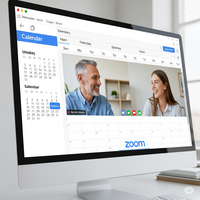


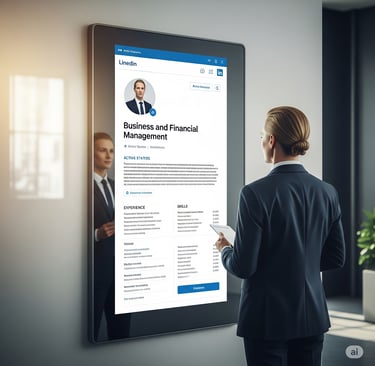

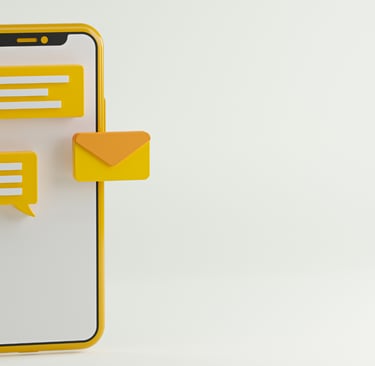









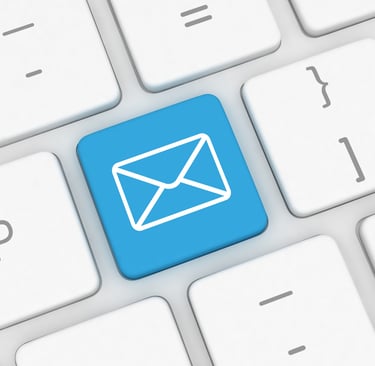






Address
4/12 Gershon Sharshevski,
Mazkeret Batya, Israel
